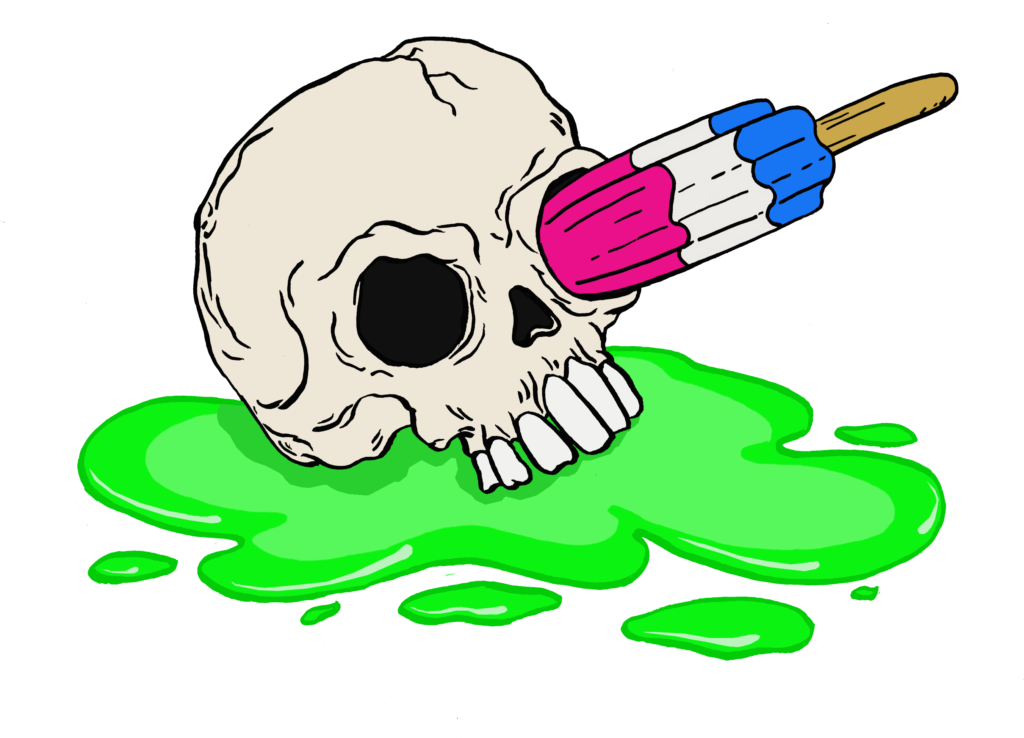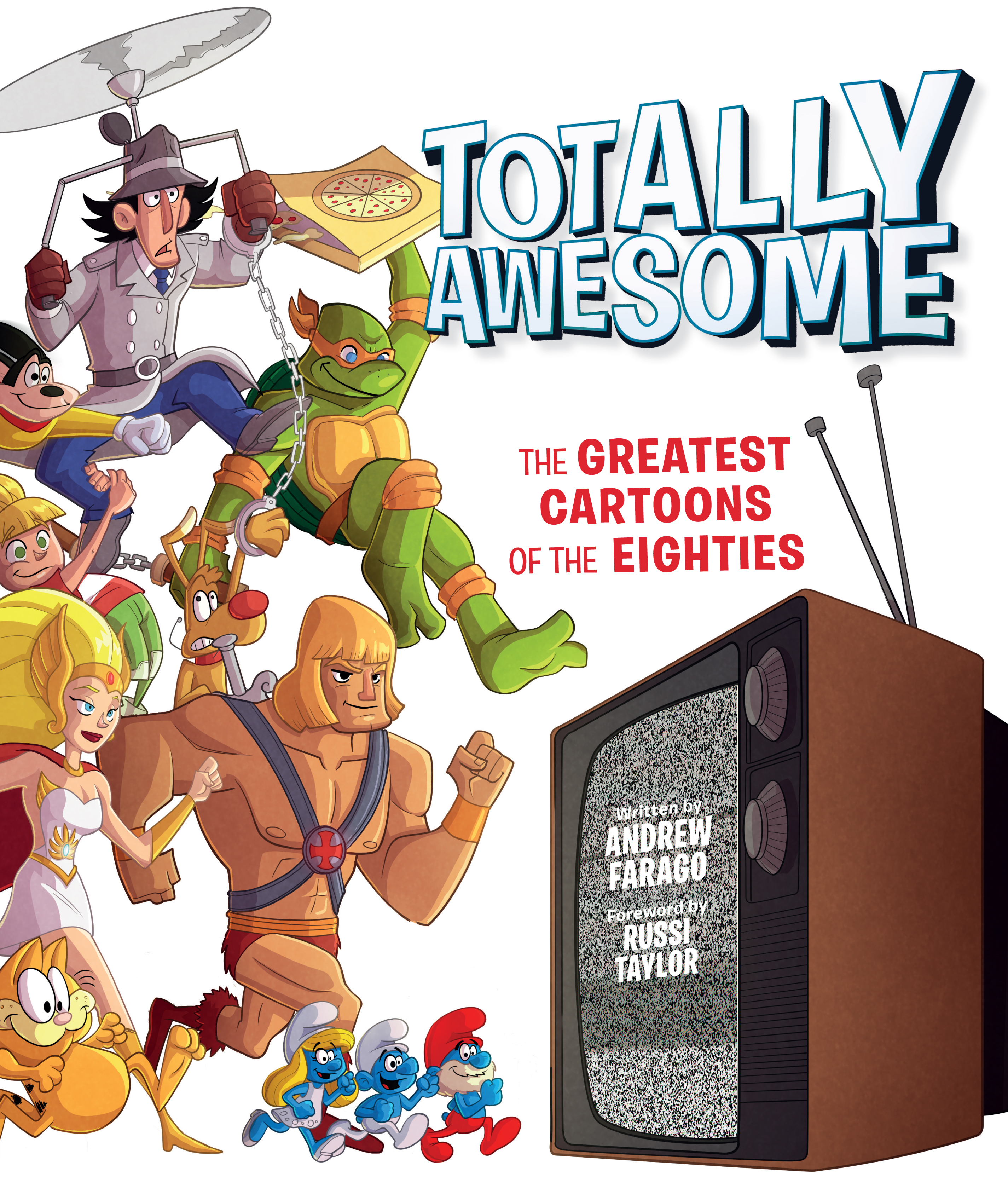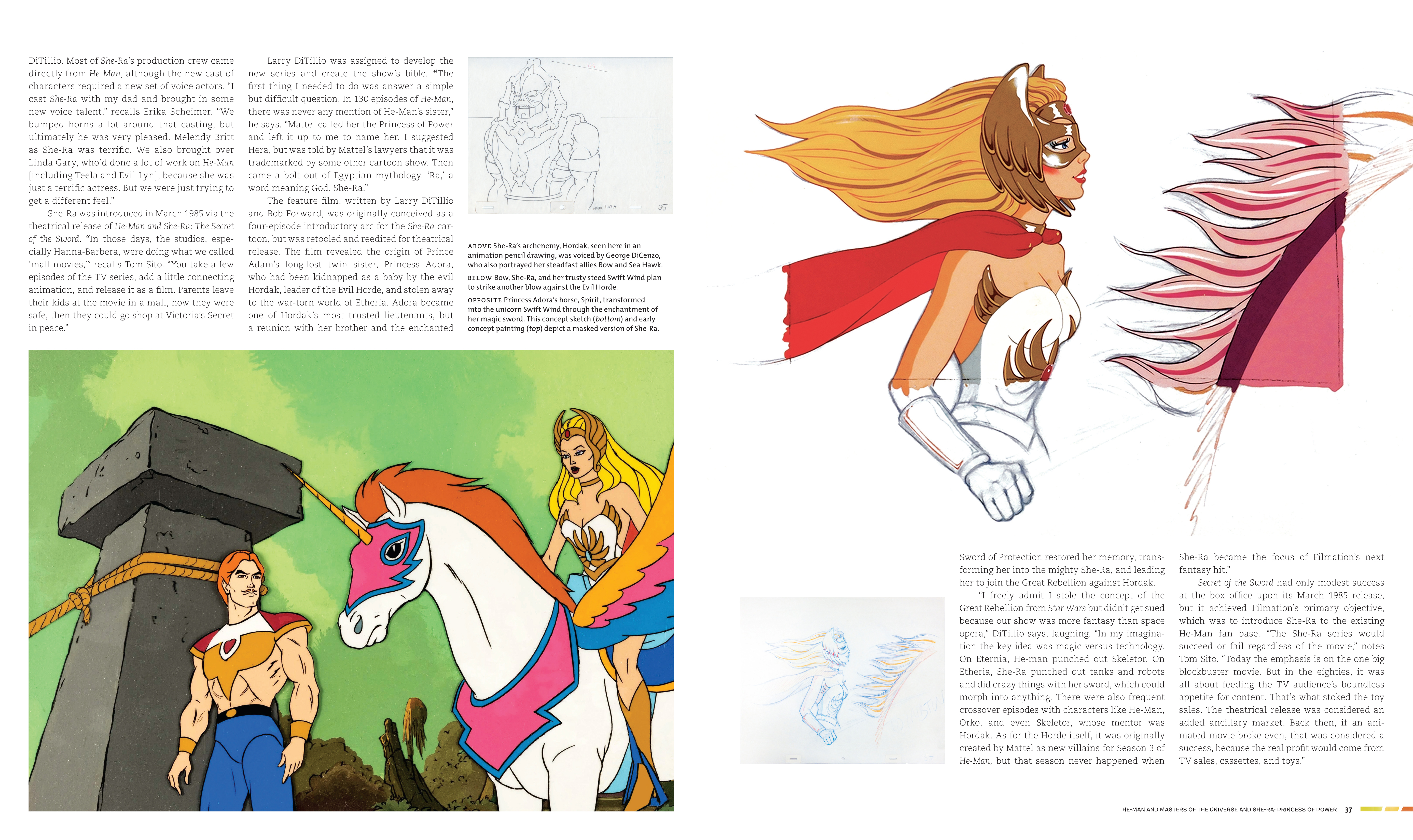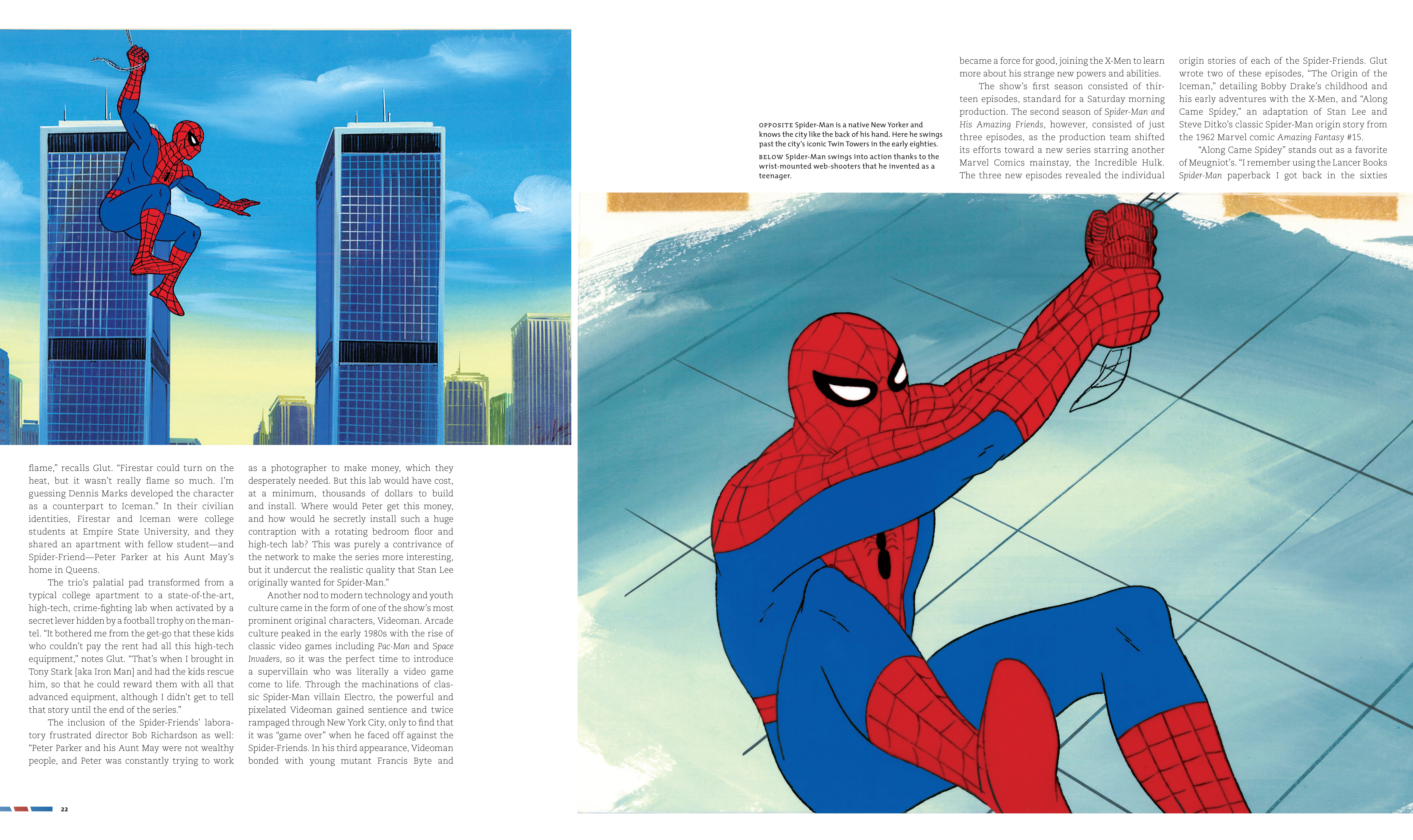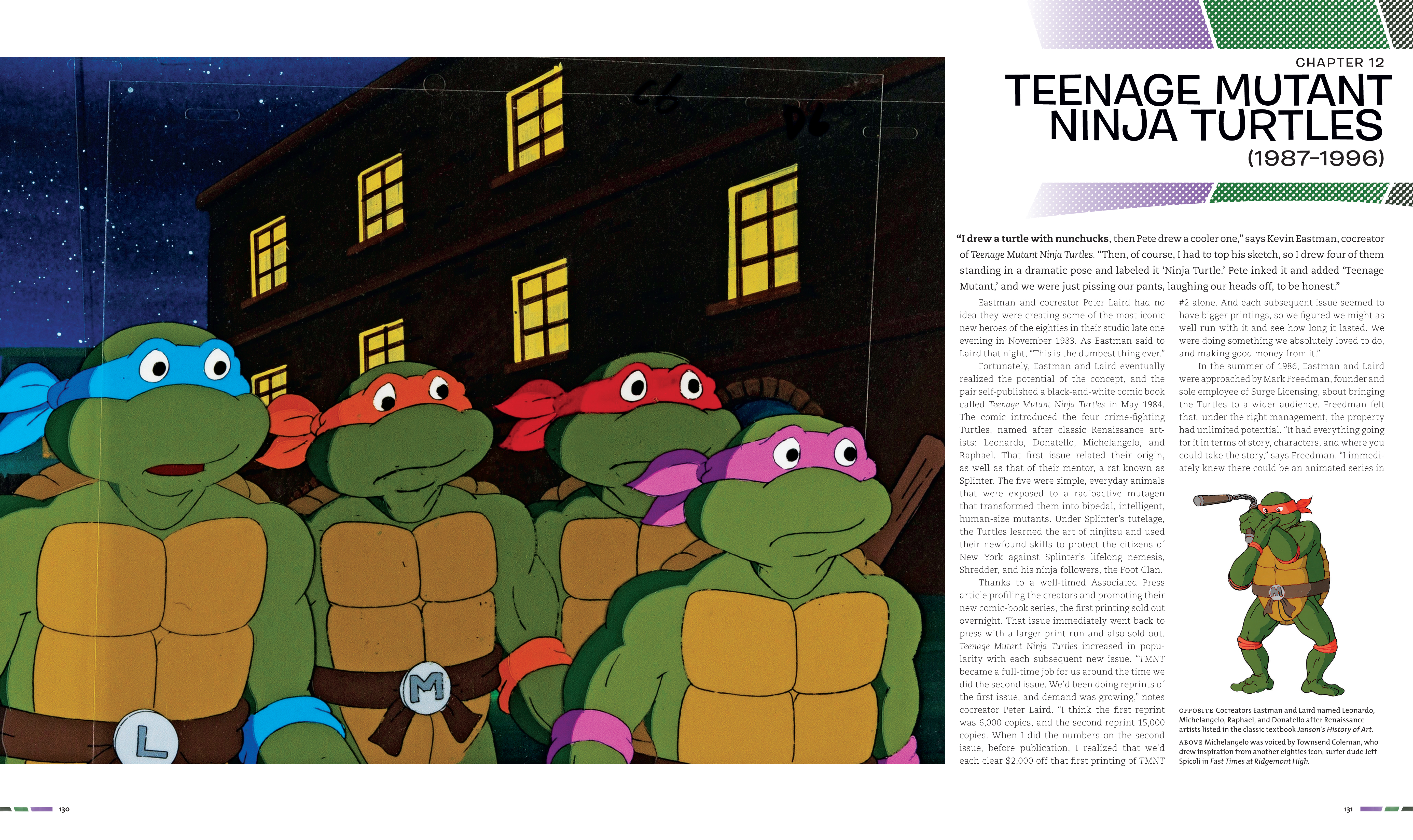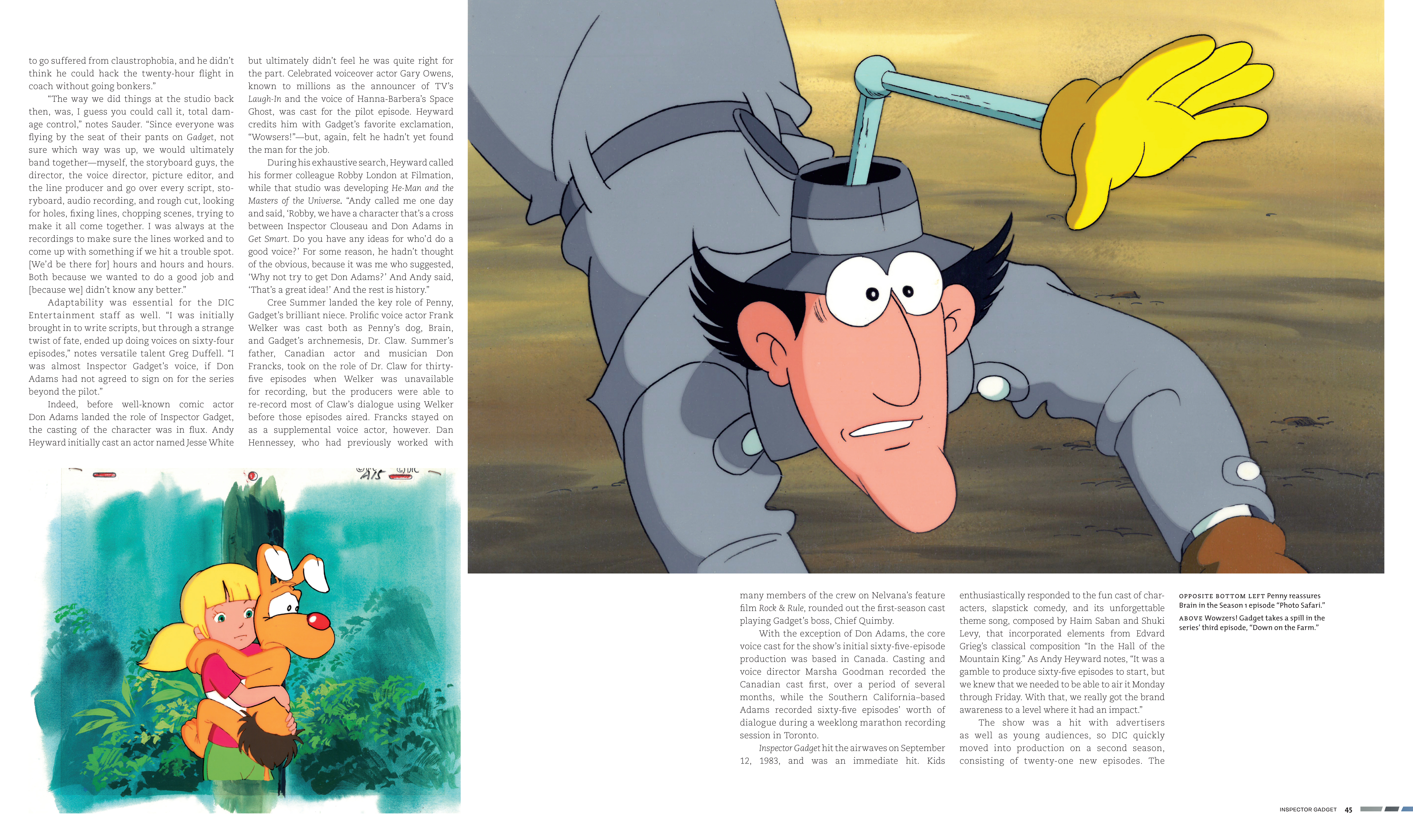Over the past year Publisher Insight Editions has comes across my radar a lot. In addition to the super cool Ghostbusters: A Visual History that I was gifted a couple Christmas seasons ago, I suddenly realized that I had a ton of their books either on my wish list or already on my shelves. It didn’t dawn on me at first, but after picking up the Teenage Mutant Ninja Turtles Pizza Cookbook, Labyrinth & The Dark Crystal: The Ultimate Visual Histories, and their book on Quentin Tarantino I was apparently a fan. When I came to that realization I started digging through their website and ended up stumbling on yet another book that I knew immediately I wanted for my collection, Totally Awesome: The Greatest Cartoons of the 80s by Andrew Farago.
I’m a huge 80s film, television and animation nerd and it seems like when it comes to books that cover these interests there are no shortage of volumes dedicated to the former two and very few to the latter. Sure, there are a handful of books floating around out there, namely the volume on Lou Scheimer and Filmation by Andy Mangels and a few books that only partially cover the cartoons of the Transformers and Smurfs, but nothing dedicated to the insanity of the 80s era of animation. Most of the books deal with the golden age (and were mainly written by animation historian Jerry Beck) and only touch on the 80s heyday. So when I learned about Totally Awesome, it shot up to the top of my “I need this in my life” pile.
The book was finally released a couple weeks ago and thanks to the fine folks at Insight I now have a copy sitting on my desk as I type this review. So, what does the book cover you ask? Farago chronicles 17 of the most notable cartoons of the decade, taking care to pick shows that cover a multitude of animation studios, networks, time-slots and genres. Saturday mornings on the major networks during the decade were a treasure trove of great shows, but it wasn’t the only place to find great cartoons in the 80s. Lest we not forget, most UHF and network channels also had impressive line-ups of syndicated animation that aired after school let out every Monday through Friday as well. So for every Saturday Morning hit like The Smurfs, there was also a weekday show like DuckTales. For every Spider-Man & His Amazing Friends there was a Transformers. This volume highlights the above four series as well as He-Man & The Masters of the Universe, She-Ra: Princess of Power, Inspector Gadget, G.I. Joe: A Real American Hero, Jem, Thundercats, Muppet Babies, The Real Ghostbusters, Disney’s Adventures of the Gummi Bears, Chip & Dale Rescue Rangers, Teenage Mutant Ninja Turtles, Garfield and Friends, and the Ralph Bakshi & Jim Kricfalusi re-launch of Mighty Mouse.
Before I dive into the book, I wanted to take a second and address the fact that this book isn’t an exhaustive reference of all 80s cartoons. I’ve been writing about 80s era animation long enough that it’s been my experience that the first reaction to a book like this (or columns and pieces I’ve written) is usually: “But why didn’t you cover <insert favorite neglected cartoon here>?!” When I was sharing pictures of the cover to Totally Awesome on social media some folks seemed to wonder why certain cartoons weren’t represented in the illustration by Christian Cornia above. Whereas the idea of a single giant tome that covered all 80s cartoons sounds great on the face of things, an undertaking of that magnitude would be huge, and the amount of research, time and licensing clearance would probably make such a work cost prohibitive. Farago, as I mention above, does a great job of picking out 17 shows, most given their own chapter, that are a very nice cross section of the decade. It gives him the space to dig into each series in a fairly in-depth manner. So take that for what it’s worth. Now, that aside, let’s dig into what IS covered in the book…
The first thing that jumped out at me about the book was that with a few exceptions each chapter is illustrated with actual animation cels from the series. Being a collector of animation art myself, it can sometimes be a subtle difference between screenshots and scans of actual cels, but I love that the time an effort was put in to track down these pieces of art. There’s a crispness to scanning the actual individual cels that gives the reader an opportunity to really examine the artistry of the animators. Screenshots tend to be hazy and vary in quality based on the source they’re pulled from, and the accurateness of how well they can be paused (believe it or not this varies by software.) It also provides a view of the process that is rarely showcased in books like this, pulling out to illuminate the little details like cel edges (that feature the handwritten episode numbers and show codes of the production) as well as unfinished illustrations (cels used for closeup that there was no point in finishing.) There are also under-drawings (the original pencil illustrations that are eventually copied onto the cels before they’re painted), which is very cool.
Another interesting aspect about this which is implied in the presentation is that not all cels were created alike. Different companies used different stock and techniques and some cels age better than others. A studio like Filmation thought of as cheapskates becasue of their re-use of run cycles and key animation sequences actually invested quite a bit in the actual quality of the hand painted cels. They are one of the few companies who kept their animation in-house and in the United States during the 80s and you can literally see a difference in the cels 30 years later. The copied animation outlines are still crisp and dark and the paint vibrant. Other shows, particularly shows produced by DiC, didn’t fare so well in the longevity department. Granted, these cels were never meant to be kept, treated as disposable assets by the studios who stockpiled them in storage lockers for years before letting the leases lapse. Cels for shows like The Real Ghostbusters are kind of a crap shoot, quality wise. Some of the paint has dulled with age, and the transferred illustration lines on the cels have faded (in some cases to almost nothing.) It’s a fascinating little detail that the book features.
So long story short, for an animation nut like me this book is a bounty. As far as the in-depth coverage of the shows goes, I was pleasantly surprised that there was a lot of work done on telling the story of both the studios, how the shows came about and highlighting the folks responsible for bringing the shows to life. Again, as I’ve written about before, in my experience it can be kind of difficult to nail down exactly who did what behind the scenes as the credits attached to the opening and endings of cartoons tend to be vague. Episode writers are typically highlighted, but most of the rest of the credits aren’t broken down to match characters to performers, and there are a lot of folks who aren’t given credit in a lot of series. It can be difficult to figure out who was responsible for story editing for instance. Back when I was writing about the Dungeons and Dragons cartoon I never realized that Steve Gerber was the story editor on the series (it wasn’t made clear in the cartoons or on the DVD sets of the series), and it wasn’t until Gerber piped to answer my question on this site that I found out. Well Farago does a bang up job of tracking down all of this stuff for the series he covers and it’s pretty awesome.
All in all, if you’re a fan of 80s era animation this book is a must-buy. I’m really hoping that there is enough positive response to the release that Insight and Farago could be convinced to work on future volumes. In fact, I think a perfect follow-up would be a book that focused on some of the more obscure series of the 80s covering shows like Turbo Teen, The Spiral Zone, Robo Fore, Dinosaucers, the Trollkins, and Kidd Video. But for now I’m content digging into the volume where I’ve already been learning more about series that I thought I already knew backwards and forwards.
